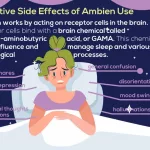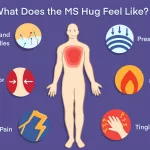Imagine waking up just before a night terror or a bout of sleepwalking and feeling the terror melt away before it even starts. That’s the promise of anticipatory awakening therapy – a gentle, low‑cost technique that many families have found surprisingly effective. In the next few minutes, I’m going to walk you through exactly what this therapy is, how it works, who can try it, and what you need to watch out for. Grab a cup of tea, get comfortable, and let’s dive in together.
What Is It?
Anticipatory awakening therapy (sometimes called scheduled awakenings) is a behavioral strategy designed to interrupt the brain’s “partial‑awake‑partial‑asleep” state that triggers parasomnias such as sleepwalking, night terrors, or even sleep talking. The core idea is simple: set an alarm or have a caregiver gently rouse the sleeper 15‑30 minutes before a predictable episode. By nudging the brain out of the triggering state, you can often stop the episode from ever taking off.
Think of it like pulling the plug on a game before the boss appears – you’re not fighting the boss, you’re simply stopping the level from loading.
How Does It Work?
The Science Behind the Trigger
During a parasomnia event the brain is caught between deep sleep and wakefulness. This liminal zone makes it hard for the sleeper to fully remember what’s happening, yet they’re still capable of complex movements. When you wake the person just before this window, you reset the brain’s arousal level, preventing the chaotic cascade that would otherwise lead to a night terror or a walk around the house.
According to Healthline, waking 15‑30 minutes before an episode “interrupts the neural cascade that triggers the parasomnia.” The brain then has a chance to settle back into a normal sleep rhythm without slipping into that dangerous half‑awake state.
Step‑by‑Step Physiological Cascade
- Pre‑episode arousal: Subtle brain signals start shifting toward wakefulness.
- Partial awakening: The sleeper may move, talk, or show signs of distress, but they’re not fully conscious.
- Full episode: If unchecked, the brain fully commits to the parasomnia behavior.
- Interruption: A gentle wake‑up resets the arousal system, returning the sleeper to stable NREM sleep.
Mini‑Diagram Description (in words)
Picture a wave: the trough is deep sleep, the peak is full wakefulness. Parasomnia lives on the gentle slope between them. Your alarm nudges the wave back down into the trough before it climbs up to the peak.
Who Can Benefit?
Age Groups: Kids vs. Adults
Parasomnias are most common in children – up to 30 % of kids will wander around at night at some point. Many outgrow them, but for the stubborn ones (or for adults who develop them later), scheduled awakenings can be a lifesaver.
Best‑Fit Parasomnias
- Sleepwalking (somnambulism)
- Night terrors (pavor nocturnus)
- Sleep talking (somniloquy)
Less research exists for REM‑related nightmares, so the therapy is less certain there.
Real‑World Example
Back in 1993, a case report in The Journal of Pediatrics described an 8‑year‑old boy who stopped sleepwalking after five consecutive nights of anticipatory awakenings. The study highlighted how a simple, low‑risk approach can completely abort a habit that had persisted for years (Tobin Jr., 1993).
Step‑by‑Step Guide to Try It
| Phase | Action | Tips / Pitfalls |
|---|---|---|
| Track | Keep a 2‑week sleep diary (bedtime, wake‑time, episode times). | Use a phone app; note any “feelings of half‑awake.” |
| Identify Pattern | Calculate average episode onset and duration. | If episodes are irregular → pause therapy. |
| Set Alarm | Program an alarm 15‑30 min before the average onset. | Choose a soft tone; avoid startling alarms. |
| Gentle Wake | Confirm the sleeper is awake, then let them settle back. | Use a calm voice: “Hey, you’re up now.” Keep lights dim. |
| Review & Adjust | After 1 week reassess timing; shift earlier/later as needed. | Document changes; aim for 2‑4 weeks total. |
| Evaluate Outcome | Count episode frequency; note any side‑effects (sleep debt). | If no improvement after 4 weeks → see a sleep specialist. |
Pro tip: If you live alone, set a backup alarm 5 minutes later, just in case the first snooze doesn’t fully wake you.
Benefits & Risks – The Balance Sheet
Benefits
- Low cost – No meds, no equipment beyond an alarm.
- Empowering – Gives families a hands‑on way to help.
- Non‑invasive – No side‑effects like drowsiness or dependence.
- Combineable – Works with other sleep‑hygiene practices.
Potential Risks
- Fragmented sleep – Frequent awakenings can cause daytime fatigue.
- Wrong timing – Waking too early or too late may actually worsen episodes.
- Psychological stress – For some, the anticipation of being woken can create anxiety.
A pediatric sleep specialist notes, “Scheduled awakenings are safe when guided by a clinician; unsupervised use may lead to chronic sleep fragmentation.” (American Academy of Sleep Medicine, 2023). This quote reminds us to keep the doctor in the loop, especially for kids.
How It Stacks Up Against Other Treatments
Medication
Drugs like clonazepam can dampen parasomnia activity, but they bring sedation, potential dependence, and often a “you‑feel‑groggy‑all‑day” vibe. Anticipatory awakening therapy, by contrast, carries none of those drawbacks and can be paired with medication if a doctor deems it necessary.
Behavioral Therapy
CBT‑I (Cognitive Behavioral Therapy for Insomnia) focuses on bedtime routines and thoughts about sleep. Scheduled awakenings can be a useful add‑on when CBT‑I alone isn’t enough to curb night terrors.
Sleep Hygiene
Good habits – dark room, cool temperature, regular bedtime – form the foundation. Think of anticipatory awakenings as the cherry on top: you still need the cake (sleep hygiene) for the cherry to taste great.
When to Call a Professional
Everyone loves a DIY approach, but there are red flags that scream “time for a sleep doctor.” If you notice any of the following, reach out:
- Episodes > 3 times per week
- Injuries during sleepwalking (e.g., bruises, falls)
- Daytime exhaustion that interferes with work or school
- Parent/partner reports of anxiety about bedtime
- Episodes that vary wildly in timing, making scheduling impossible
A sleep specialist can run a polysomnography (overnight sleep study) to map out exact patterns and may suggest a tailored alarm protocol or alternative therapies.
Practical Tips for Success
- Soft alarm tone – A gentle chime works better than a blaring buzzer.
- Wearable tracker – Many smart bands can flag unusual movements.
- Team effort – Enlist a partner or family member to double‑check the wake‑up.
- Relaxation before bed – Deep breathing or progressive muscle relaxation can lower the overall arousal threshold.
- Track daytime alertness – If you feel groggy, adjust the wake‑up window or shorten the duration of awakenings.
Resources & Further Reading
For a concise overview, the Healthline article is an excellent starting point. The American Academy of Sleep Medicine also publishes guidelines on parasomnia control that are worth a skim.
Conclusion
Anticipatory awakening therapy isn’t a miracle cure, but it’s a practical, evidence‑backed tool that can give families a real sense of control over night terrors, sleepwalking, and other parasomnias. By tracking patterns, gently waking before the episode, and staying consistent for a few weeks, many experience a noticeable drop in disruptive events – often without any medication. Remember, the key is balance: weigh the benefits of fewer night scares against the possibility of a slightly fragmented night. If you hit a wall, don’t hesitate to bring a sleep specialist into the conversation.
Have you tried scheduled awakenings or another sleep‑related strategy? Share your story in the comments – your experience might be the very thing that helps someone else finally get a peaceful night. And if you have questions, feel free to ask – we’re all in this together, chasing sweet dreams one night at a time.


















Leave a Reply
You must be logged in to post a comment.